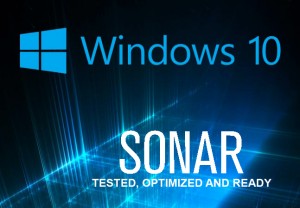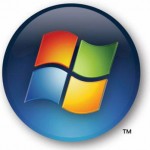 Windows 10 is here, and our trusted code-commanders have been working closely with Microsoft to ensure an enhanced experience for our valued Cakewalk community. Our benchmark testing has shown the new operating system to be very efficient with a lighter footprint. In general, Windows 10 has outperformed Windows 8 in all of our tests in terms of performance and efficiency. Subjectively speaking, the “look and feel” of this free upgrade is a much welcomed improvement over the “Metro” landscape of the previous operating system. But what does this mean for music creators?
Windows 10 is here, and our trusted code-commanders have been working closely with Microsoft to ensure an enhanced experience for our valued Cakewalk community. Our benchmark testing has shown the new operating system to be very efficient with a lighter footprint. In general, Windows 10 has outperformed Windows 8 in all of our tests in terms of performance and efficiency. Subjectively speaking, the “look and feel” of this free upgrade is a much welcomed improvement over the “Metro” landscape of the previous operating system. But what does this mean for music creators?
1.) More responsive: Out of the gate people will notice a much snappier operating system. The tweaks Microsoft made to the kernel and other parts of the OS in general have given it a responsive overhaul.
2.) Upgrade ease: Moving into Windows 10 is a very quick and easy upgrade.
3.) Unified OS: The best elements of Win 7, Win 8, and Win 8.1 have been combined into a streamlined experience with Win 10. Store Apps and Desktop Apps seamlessly run side by side for a smooth universal experience.
4.) New MIDI API available across all devices: The new API allows multi-client access to single MIDI hardware and new jitter-free operation. Microsoft worked hard on bringing this all together for better MIDI implementation.
5.) Enhancements to the kernel: Microsoft has made changes in the multimedia scheduler and kernel components to minimize spikes – this can make a big difference in low-latency streaming apps like SONAR.
6.) FLAC and ALAC Support: Windows 10 has native support for these two codecs. Both “Apple Lossless Audio Codec” and FLAC could mean great things for Windows audio moving forward.
7.) Much faster boot-time: A lower footprint in memory combined with some new optimization techniques will get you up and running and making music faster than ever.
8.) Runs smoother on older machines: The lower memory footprint and optimization tweaks will also allow Win 10 to run more efficiently on older machines. This is great news for Wn 7 users who never upgraded to Win 8.
9.) Lower Latency: 15ms lower roundtrip latency using WASAPI (shared mode).
10.) Core isolation: Drivers and applications can now isolate and dedicate low latency audio processing to a single CPU core. This can minimize the effect of DPC latency spiking from networking, Bluetooth, or other DPC spiking processes by preventing interruptions to audio processing.
At Cakewalk, we are dedicated to staying on the forefront of technology. Our CTO (featured below) and his team worked closely with Microsoft to make sure our products run smoothly on Windows 10. We are very excited about this free update, and highly recommend it to our customers. Try SONAR with Windows 10 today for the ultimate music creation experience.



 Cakewalk Chief Technical Officer Noel Borthwick, a noted expert on Windows platforms, covers crucial topics around the introduction of Windows 7, such as compatibility with Cakewalk products, issues in upgrading from Windows XP and related points of interest for PC users.
Cakewalk Chief Technical Officer Noel Borthwick, a noted expert on Windows platforms, covers crucial topics around the introduction of Windows 7, such as compatibility with Cakewalk products, issues in upgrading from Windows XP and related points of interest for PC users.
 Cakewalk’s CTO Noel Borthwick has been hard at work creating this microscopic view of SONAR 8.5 for those of you who have expressed an interest in learning more about the internals of the new features. Throughout this post, Noel will uncover the new version from an engineering perspective. However, before we get started on the fine print, let’s first clarify some facts and myths about SONAR 8.5.
Cakewalk’s CTO Noel Borthwick has been hard at work creating this microscopic view of SONAR 8.5 for those of you who have expressed an interest in learning more about the internals of the new features. Throughout this post, Noel will uncover the new version from an engineering perspective. However, before we get started on the fine print, let’s first clarify some facts and myths about SONAR 8.5.